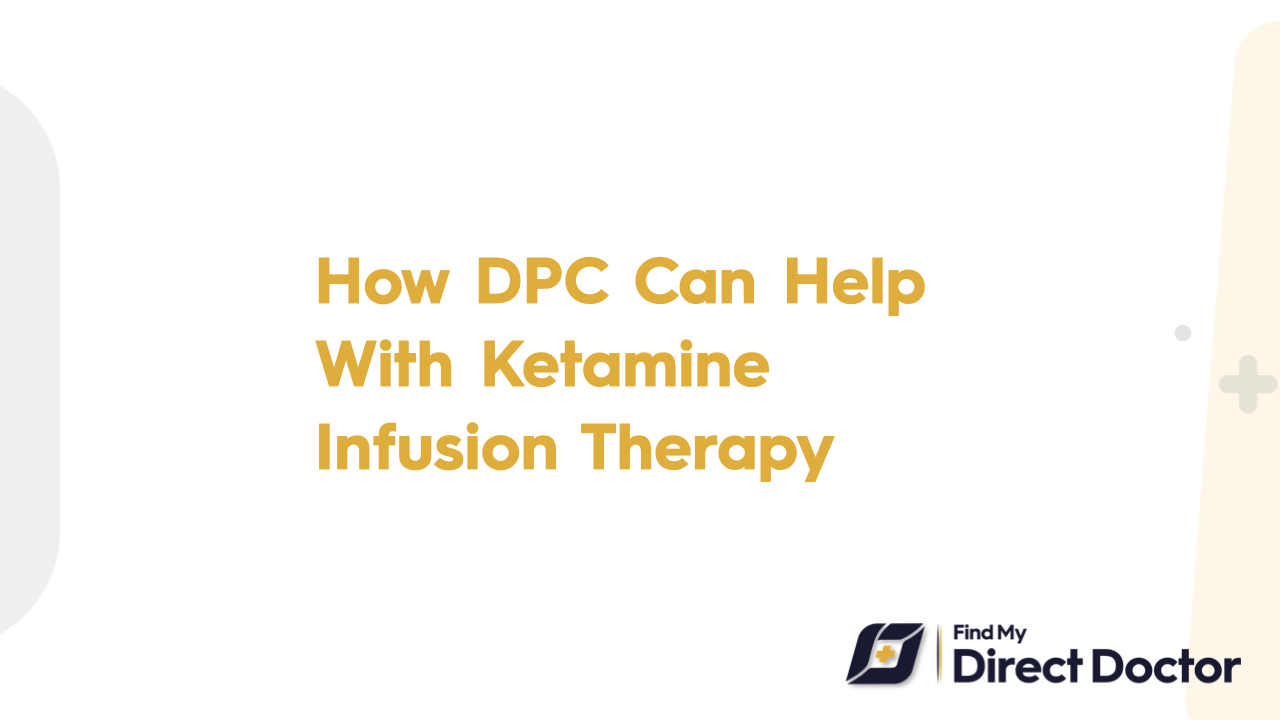Ketamine Infusion Therapy and Direct Primary Care (DPC): Rapid Relief, Personalized Support
If traditional treatments for depression, chronic pain, or PTSD don't work, ketamine infusion therapy could help. DPC makes sure that this new treatment is given safely, watched closely, and added to your overall care.

Learning about Ketamine Infusion Therapy: A New Way to Help People with Mental Health
Ketamine, which blocks NMDA receptors, is used to treat:
- Treatment-resistant depression (TRD): Fast relief from symptoms in a few hours.
- Chronic pain syndromes: CRPS, fibromyalgia, and neuropathic pain.
- Anxiety and PTSD: Off-label use is showing promise.
Given through an IV in a controlled setting over 40 minutes.
Important information for patients:
- Uses: Helps with symptoms when SSRIs or therapy don't work.
- Safety: Low risk; dissociation or changes in blood pressure during infusion.
- Costs: DPC gets lower rates; regular clinics charge between 400 USD and 800 USD per session.
Risks of not treating conditions:
- Suicidal thoughts, disability, and dependence on opioids.
How DPC improves ketamine therapy
Direct Primary Care (DPC) makes ketamine treatment a smooth, patient-centered process:
1. A thorough evaluation before treatment
- Screening for mental health: Exclude bipolar or psychotic contraindications.
- Check the health of the heart, the function of the kidneys, and any drug interactions.
- Protocols that are made just for you: Find the best dose and frequency, like six sessions over two to three weeks.
2. Infusions in the office that are coordinated
- A comfortable place to be: recliners, soothing music, and privacy.
- Important monitoring: Keep an eye on your blood pressure, heart rate, and oxygen levels during sessions.
- Therapist integration: Provide simultaneous psychotherapy to improve understanding.
3. Kind care after the infusion
- Access 24 hours a day, seven days a week: Take care of nausea or dizziness right after the infusion.
- Planning for maintenance: Schedule booster sessions based on how often symptoms come back.
- Holistic support: Suggest mindfulness, good nutrition, and good sleep habits.
Success Stories from Real Life
- Case 1: Emma, 35 years old, has TRD. Emma's DPC team gave her 6 infusions, and her PHQ-9 score went down from 25 to 8.
- Case 2: John, 50, has CRPS in case 2. John's DPC provider used ketamine and physical therapy to lower his pain from 9/10 to 4/10.
Frequently Asked Questions About DPC Ketamine Therapy
- Q: When will I start to feel better?
- A: Many people feel better within 24 hours and pain relief within 1 to 3 sessions.
- Q: Does insurance pay for infusions?
- A: Not very often. DPC has discounted self-pay packages.
- Q: Can I drive after taking the dose?
- A: No. Make plans for transportation; the effects will wear off in 1–2 hours.
- Q: What if I don't feel well?
- A: DPC starts with lower doses and has plans in place for emergencies.
Why DPC is the Best Place for Ketamine Care
The American Psychiatric Association (APA) stresses the need for quick action when someone has TRD. DPC gets things done by:
- Cutting down on wait times: 90% of people start esketamine within a week, compared to more than three weeks in the past.
- Integrated therapy cuts the chance of relapse by 40%.
- Cutting costs: Bundled care helps members save 2,000 USD to 5,000 USD a year.
Final Thoughts
DPC's ketamine therapy isn't just about drugs; it's also about caring for people in a way that gives them hope again. With DPC, you get a partner who keeps an eye on your heart rate, changes your dose, and helps you get better. No broken care, no money problems—just expert help that gets you out of the dark and into the light.






